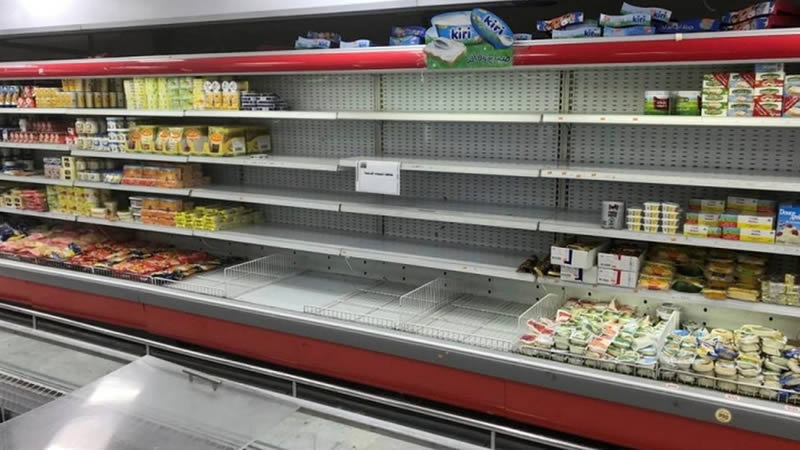Theme: Two fundamental changes have somewhat altered the dynamics of inventory gains and losses since FY08. 1) Shift to monthly product pricing and 2) higher share of imports in overall product procurement. We have addressed the impact both these changes have had on the quantum of inventory gains and losses and their direction with respect to oil prices.
OMC pricing model is not a pure “zero inventory model”: Petroleum product pricing method – which determines product pricing based on preceding month’s regional average prices – supports “zero inventory model” for OMCs only if the entire procurement is done from local refineries. Imports by OMCs are priced at the prices prevailing at the time of order placement; hence “product pricing method” calls for OMCs to ensure that the entire month’s import requirements are ordered before the month begins.
Shift to monthly pricing has increased inventory requirement for imported products: While fortnightly pricing regime required 15 days inventory for imported products, shift to monthly revision in prices have correspondingly increased the inventory requirement to 30 days. Furnace oil – a deregulated product – continues to be priced on fortnightly basis.
Higher imports have increased average inventory holding requirement: As opposed to 38% in FY06, imports comprised 55% of FY10 industry volumes and 78% of PSO’s FY10 volumes. As a result, PSO now needs to hold at least 16 days inventory (based on total volumes) to lock in preceding month’s regional prices as product costs.
Bottom line – quantum of inventory exposure has reduced significantly and… Current scenario (monthly price revisions + 78% share of imports) has reduced the quantum of inventory exposure to 9 days for PSO, assuming 25 days inventory holding. If pricing mechanism reverts back to monthly revisions and share of imports falls to 50% (FY08 levels), inventory exposure would rise to 17 days.
…reverse direction – gains in falling prices and vice versa – is also possible: If inventory holding falls below 16 days, PSO can possibly realize inventory gains in falling oil prices and inventory losses in rising oil prices.
Theme
While dynamics of inventory gains and losses once used to be very straight forward – gains in rising oil prices and losses in falling oil prices – two fundamental changes have somewhat altered the dynamics. 1) Shift to monthly product pricing and 2) higher share of imports in overall product procurement. In this piece we have addressed the impact both these changes have had on the quantum of inventory gains and losses and their direction with respect to oil prices.
OMC pricing model is not a pure “zero inventory model”
Petroleum product pricing mechanism – which determines product pricing based on preceding month’s regional average prices – supports “zero inventory model” for OMCs only if the entire procurement is done from local refineries. Products sold by local refineries are priced in a similar way, with prices being determined monthly, based on preceding months regional
average product prices. Imports by OMCs, on the other hand, are priced at prices prevailing at the time of order placement; hence “product pricing method” requires OMCs to ensure that the entire months import requirements are ordered before the month begins, with average import price equaling the preceding month’s average. Therefore, if an OMC is importing 50% of its volumes, it shall hold 30 day inventory for the imported products – equaling 15 days (50% x 30) of its aggregate volumes – for eliminating the mismatch in reference time period of selling prices and costs. On the flipside, an OMC which is primarily reliant on local refinery supplies, would not face any mismatch and therefore would not be required to hold any inventory.
Shift to monthly pricing have increased inventory requirement for imported products
Fortnightly revisions (on the 1st and 16th of every month) in petroleum product prices required OMCs to hold fifteen days inventory of imported products in order to match the selling price time period to that of cost price. Since Feb-09, petroleum product prices are being notified monthly, which means OMCs’ selling prices during a month now reflect regional prices during the preceding month, correspondingly increasing the inventory holding requirement to 30 days for imports. Furnace oil – a deregulated product – continues to be priced on fortnightly basis, and thus still requires fifteen day inventory for imports.
Higher imports have increased average inventory holding requirement
With imports requiring thirty days in inventory and zero inventory requirements for locally refined products, rising share of imports would increase aggregate inventory holding requirement for OMCs. This has exactly been the case as imports now comprise 55% of FY10 industry volumes, as opposed to 38% in FY06. PSO’s dependence on imports is even higher than the industry average, as the incumbent imported 78% of its FY10 volumes. As a result, PSO now needs to hold at least 16 days inventory (based on total volumes) to lock in preceding month’s product costs.
Bottom line – quantum of inventory exposure has reduced and…
Rising share of imports, and shift to fortnightly price revisions have raised required inventory levels for PSO to 16 days. On the other hand, actual inventory levels have continued to range between 25-30 days. This has led to 49% reduction in quantum of inventory exposed to oil prices – from 17 days of sales in FY08 to 9 days of sales in FY10 assuming 25 days inventory holding. As a result, contribution of inventory gains and losses to the company’s profits have somewhat reduced from its historical levels.
…reverse direction – gains in falling prices and vice versa – is also possible
If inventory holding falls below 16 days, PSO can possibly book inventory gains in falling oil prices and inventory losses in rising oil prices. While we have yet to witness this phenomenon, 4QFY10 gives a close indication where PSO booked PKR900mn in inventory gains despite a marginal decline in oil price.
Economic & Political News
Budget deficit reaches record PKR510bn
The budget deficit for the1HFY11 has now been estimated at 3% of GDP or PKR510bn (initial upward revised target at 2.6% of GDP PKR442bn). Tariff subsidies over and above parliament approved limit, withdrawal of increase in POL prices and additional security expenditures were the main causes. Govt left with no option but to implement painful decisions from Feb 1. If subsidies were allowed during 2HFY11, they would put unbearable burden on the economy and would leave no option but to increase borrowing from the market on higher interest rates. The IMF is expected to hold discussions with Pakistan for the fifth review soon and propose a set of performance criteria for end June and structural benchmarks that would form the basis for the sixth and final review under the Stand-By Arrangements.
15.4% drop in foreign investment
Net inflows of foreign investment in Pakistan reached USD1.05bin mark in 1HFY11 against USD1.241bn in corresponding period of FY10, depicting a decline of USD164mn (15.4% decline YoY). Foreign direct investment (FDI) posted a decline of 14.5% during 1HFY11. According to SBP, FDI slumped by USD140.4mn to USD828.5mn in 1HFY11 as compared to USD968.9mn in 1HFY10. Portfolio investment was still on decline and registered a decrease of 18.6% in 1HFY11 (USD221.5mn in 1HFY11 relative to USD272.1mn in 1HFY10 depicting a decline of USD50.6mn).
Analyst Certification:
The research analyst(s) denoted AC on the cover of this report, primarily involved in the preparation of this report, certifies that (1) the views expressed in this report accurately reflect his/her personal views about all of the subject companies/securities and (2) no part of his/her compensation was, is or will be directly or indirectly related to the specific recommendations or views expressed in this report.
Disclaimer
The report has been prepared by Elixir Securities Pakistan (Pvt.) Ltd and is for information purpose only. The information and opinions contained herein have been compiled or arrived at based upon information obtained from sources, believed to be reliable and in good faith. Such information has not been independently verified and no guaranty, representation or warranty, expressed or implied is made as to its accuracy, completeness or correctness. All such information and opinions are subject to change without notice. Descriptions of any company or companies or their securities mentioned herein are not intended to be complete and this document is not, and should not be construed as, an offer, or solicitation of an offer, to buy or sell any securities or other financial instruments.
Research Dissemination Policy
Elixir Securities Pakistan (Pvt.) Ltd. endeavors to make all reasonable efforts to disseminate research to all eligible clients in a timely manner through either physical or electronic distribution such as mail, fax and/or email. Nevertheless, not all clients may receive the material at the same time.
Company Specific Disclosures
Elixir Securities Pakistan (Pvt.) Ltd. may, to the extent permissible by applicable law or regulation, use the above material, conclusions, research or analysis in which they are based before the material is disseminated to their customers. Elixir Securities Pakistan (Pvt.) Ltd., their respective directors, officers, representatives, employees and/or related persons may have a long or short position in any of the securities or other financial instruments mentioned or issuers described herein at any time and may make a purchase and/or sale, or offer to make a purchase and/or sale of any such securities or other financial instruments from time to time in the open market or otherwise. Elixir Securities Pakistan (Pvt.) Ltd. may make markets in securities or other financial instruments described in this publication, in securities of issuers described herein or in securities underlying or related to such securities. Elixir Securities Pakistan (Pvt.) Ltd. may have recently underwritten the securities of an issuer mentioned herein.
Other Important Disclosures
Foreign currency denominated securities is subject to exchange rate fluctuations which could have an adverse effect on their value or price, or the income derived from them. In addition, investors in securities such as ADRs, the values of which are influenced by foreign currencies effectively assume currency risk. Foreign currency denominated securities is subject to exchange rate fluctuations which could have an adverse effect on their value or price, or the income derived from them. In addition, investors in securities such as ADRs, the values of which are influenced by foreign currencies effectively assume currency risk.
Contributed By












